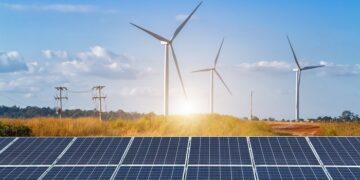Gold Fields Targets 660,000oz Gold Output in 2025 to Bolster Production and Revenue
Gold Fields Ghana is projecting a significant ramp-up in its gold production for 2025, with a target of approximately 660,000 ounces.
This marks a notable rebound from the 331,200 ounces produced in 2024—a year which saw an 11% decline in output compared to the 371,800 ounces recorded in 2023, largely due to lower ore grades mined from both underground and surface sources.
Speaking exclusively to NorvanReports on the sidelines of the 2025 West African Mining and Power Expo (WAMPEX) in Accra, themed “The Mining and Power Hub: Driving Sustainable Investment Opportunities in West Africa,” Elliot Twum, Senior Vice President and Managing Director of Gold Fields Ghana, noted that the planned increase in gold production for the year is expected to boost the company’s revenue given the ongoing rally in gold prices.
In 2024, the country produced around 4.9 million ounces of gold. The projected increase in gold production by Gold Fields is expected to help increase the country’s total gold production for this year, raking in more revenue for the Government.
ESG Commitments and Strategic Pillars
Mr Twum further outlined Gold Fields’ strategic pillars, with strong emphasis on Environmental, Social and Governance (ESG) performance. He highlighted the company’s focus on sustainable mining practices, including reduced carbon emissions, water recycling, and support for host communities.
“Our ESG strategy is broad and holistic. From promoting women in mining and in-country procurement to stimulating local economic activity, we are fully committed to responsible mining,” said Mr Twum.
“We currently recycle 85% of the water used at our Damang and Tarkwa sites. We also engage in concurrent rehabilitation efforts—planting cash crops and trees in mined-out areas. These initiatives are aligned with our goal to leave behind a positive legacy.”
Among the company’s standout legacy projects is the planned rehabilitation and modernization of the Apinto Government Hospital in Damang—aimed at reducing the need for patient transfers to distant regional facilities in Kumasi, Cape Coast or Accra.
“Another transformational initiative is the road infrastructure we’ve developed. The new road from Aboso Junction has already stimulated significant economic activity in the area, and we’re set to begin construction of a new stretch from the new site to Aboso Junction,” Mr Twum added.
Ghana’s Strategic Role in Gold Fields’ Global Operations
Ghana contributes about 29% to Gold Fields’ total global production. The company holds a 90% stake in the Tarkwa and Damang Mines, with the Government of Ghana retaining a 10% free-carried interest. Collectively, the two mines account for 31% of Gold Fields Group’s output.
In 2024, the company spent over $1.27 billion globally in benefits to host communities, with Ghana receiving $621 million (approximately GHS 9 billion). Payments to the Government of Ghana during the year amounted to $266 million (GHS 2.6 billion).
For the first quarter of 2025 alone, Gold Fields has made GHS 1.5 billion in payments to government, GHS 1.9 billion in host community procurement, and GHS 9.3 million in socio-economic investments.
Global Footprint and Market Standing
Gold Fields is a globally diversified gold producer with operations in Australia, South Africa, Ghana, Chile, Peru and Canada. The company has ten operating mines, with a total attributable annual gold-equivalent production of 2.07 million ounces. It holds proved and probable reserves of 44.3 million ounces, measured and indicated resources of 30.4 million ounces, and inferred resources of 11.6 million ounces.
Gold Fields is listed on the Johannesburg Stock Exchange (JSE) and its American Depositary Shares trade on the New York Stock Exchange (NYSE).
The company’s growing presence and continued investments in Ghana underscore its commitment to being a partner of choice for sustainable development in West Africa’s mining sector.








